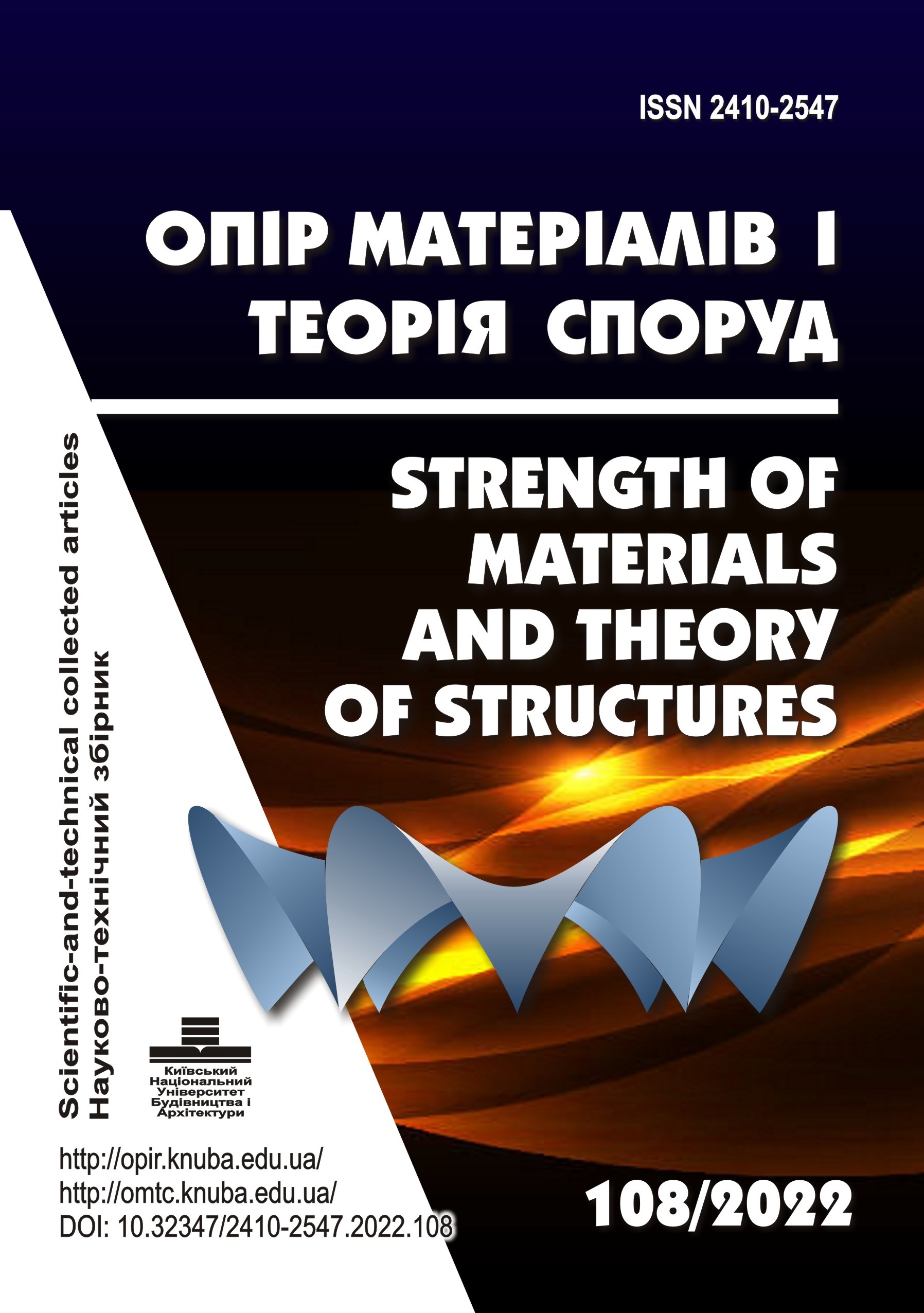Mechanical strength increasing of abrasive reinforced wheel
DOI:
https://doi.org/10.32347/2410-2547.2022.108.295-308Keywords:
abrasive reinforced wheel, strength, reinforcing mesh, centrifugal and bending forces, deformationAbstract
The mechanical strength of unreinforced abrasive wheels is determined by centrifugal and bending forces, but their distribution during reinforcement is unknown. It was assumed that the stresses are distributed evenly, but a comparison of calculations on the theory of elasticity and real characteristics on a special stand showed complete discrepancy. Tensile tests of the wheels made it possible to compare the stresses results in the circumferential and radial directions. Was found that the reinforced wheel is an anisotropic body. Anisotropy can be reduced by displacing one reinforcement mesh relatively to the other by angle of 45°. In this paper, a mathematical model of the stress-strain state of the abrasive reinforced wheel was developed, taking into account the anisotropy of its properties. To determine the centrifugal forces, the theory of elasticity for an orthotropic body is applied. The bending forces that arise in the working wheel were determined during solving the problem of the distribution of deformations in the anisotropic annular plate rigidly fixed along the inner contour. As a result of experimental studies, it was found that stresses reach 8...23 MPa, which can be compared with the ultimate strength of the wheel matrix. The elastic module of the wheel matrix is noticeably greater than the elastic module of the reinforcing mesh, which practically does not perceive the load at the initial stage. The developed mathematical model of the strength indicators for abrasive reinforced wheels makes it possible to predict their reliability and safe operation.
References
Luga Abrasive Plant. [online] Available at: https://www.abrasives.ru/en/ [Accessed: 9 October 2021].
Interviu generalnogo direktora «Luzhskogo abrazivnogo zavoda» Vadima Andreevicha Borisova: «Nas nevozmozhno sbit s puti…» (Interview with Vadim A. Borisov, General Director of Luga Abrasive Plant: «We cannot be led astray...». [online] Available at: https://master-forum.ru/intervyu-generalnogo-direktora-171-luzhskogo-abrazivnogo-zavoda-187-vadima-borisova-171-nas-nevozmozhno-sbit-s-puti-187/ [Accessed: 9 October 2021] (in Russian).
Ojolo S. J., Orisaleye J. I., Adelaja A. O. Development of a high speed abrasive cutting machine. Journal of Engineering Research. 2010. 15(3), September, pp. 1–8. [online] Available at: https://www.researchgate.net/publication/305639792_Development_of_a_ high_speed_ abrasive_cutting_machine [Accessed: 9 October 2021].
Ispytanie abrazivnykh otreznykh i shlifovalnykh krugov: kak pravilno ego provesti? Stend dlia ispytnii (Abrasive cut-off and grinding wheels test: how to carry out correctly? Test bench). [online] Available at: https://ukrabraziv.com.ua/novosti/33-ispytanie-shlifovalnykh-abraziv¬nykh-krugov [Accessed: 9 October 2021] (in Russian).
Bilek O., Hrdina J., Lukovics I., Pero R., Samek D. Improved shape of rotating grinding wheels for high speed grinding. Tehnički vjesnik. 2014. 21, pp. 63–68. [online] Available at: https://www.researchgate.net/publication/289840795_Improved_shape_of_rotating_grinding_wheels_for_high_speed_grinding [Accessed: 9 October 2021].
Hou1 Y., Li1 C., Zhou Y. Applications of high-efficiency abrasive process with CBN grinding wheel. Engineering. 2010. 2(3), pp. 184–189. DOI: http://dx.doi.org/10.4236/eng.2010.23026.
Mackin T.J., Inglis H. M. Failure analysis of a particulate composite cutoff wheel with fiber reinforcing. In: the 10th International Conference on Fracture, Honolulu, HI, December, 2–6, 2001. [online] Available at: https://www.gruppofrattura.it/ocs/index.php/ICF/ICF10/paper/
viewFile/4651/6659 [Accessed: 9 October 2021].
Abrashkevych Yu.D., Pelevin L.Ye., Machyshyn G.M. Ekspluatatciia abrazivnykh armirovannykh krugov (Operation of abrasive reinforced wheels). Montazhnye i spetcialnye raboty v stroitelstve. 2016. Issue 4, pp. 30–32 (in Russian).
Abrashkevych Yu.D., Pelevin L.Ye., Machyshyn G.M., Tishkovets V.P. Faktory, vliiaiushchie na bezopasnost ispolzovaniia abrazivnikh armirovannykh krugov (Factors affecting the safety of abrasive reinforced wheels using). Montazhnye i spetcialnye raboty v stroitelstve. 2017. Issue 9, pp. 11–14 (in Russian).
Timoshenko S.P., Goodyear J. Teoriia uprugosti (Theory of elasticity). Moscow, 1975. 576 p. (in Russian).
Pisarenko G.S., Agaev V.A., Kvitka A.L., Popkov V.G., Umansky E.S. Kurs soprotivleniia materialov (Strength of materials course). Kyiv, 1979. 696 p. (in Russian).
Avril N.J. Manufacturing glass-fiber reinforcement for grinding wheels. Department of Materials Science and Engineering, Massachusetts Institute of Technology. 1996. [online] Available at: https://www.researchgate.net/publication/33807673_Manufacturing_glass-fiber_
reinforcement_for_grinding_wheels [Accessed: 9 October 2021].
Timoshenko S.P., Voinovsky-Krieger S. Plastinki i obolochki (Plates and shells). Moscow, 1966. 636 p. (in Russian).
Dubovyk V.P., Yuryk I.I. Vyscha matematyka (Higher mathematics). Kyiv, 2005. 648 p. (in Ukrainian).
Downloads
Published
Issue
Section
License

This work is licensed under a Creative Commons Attribution 4.0 International License.
Authors retain copyright and grant the journal right of first publication with the work simultaneously licensed under a Creative Commons Attribution License that allows others to share the work with an acknowledgement of the work's authorship and initial publication in this journal.

